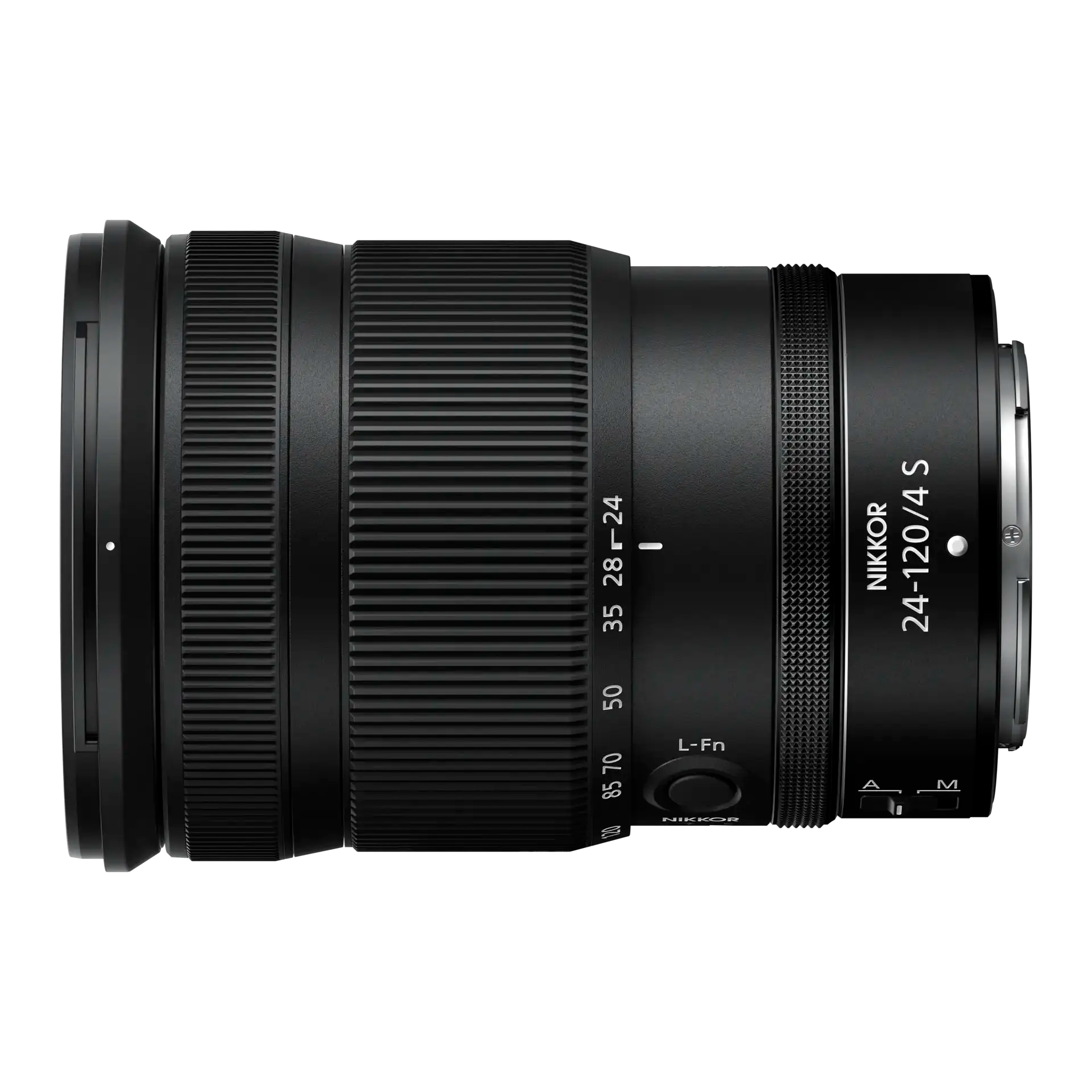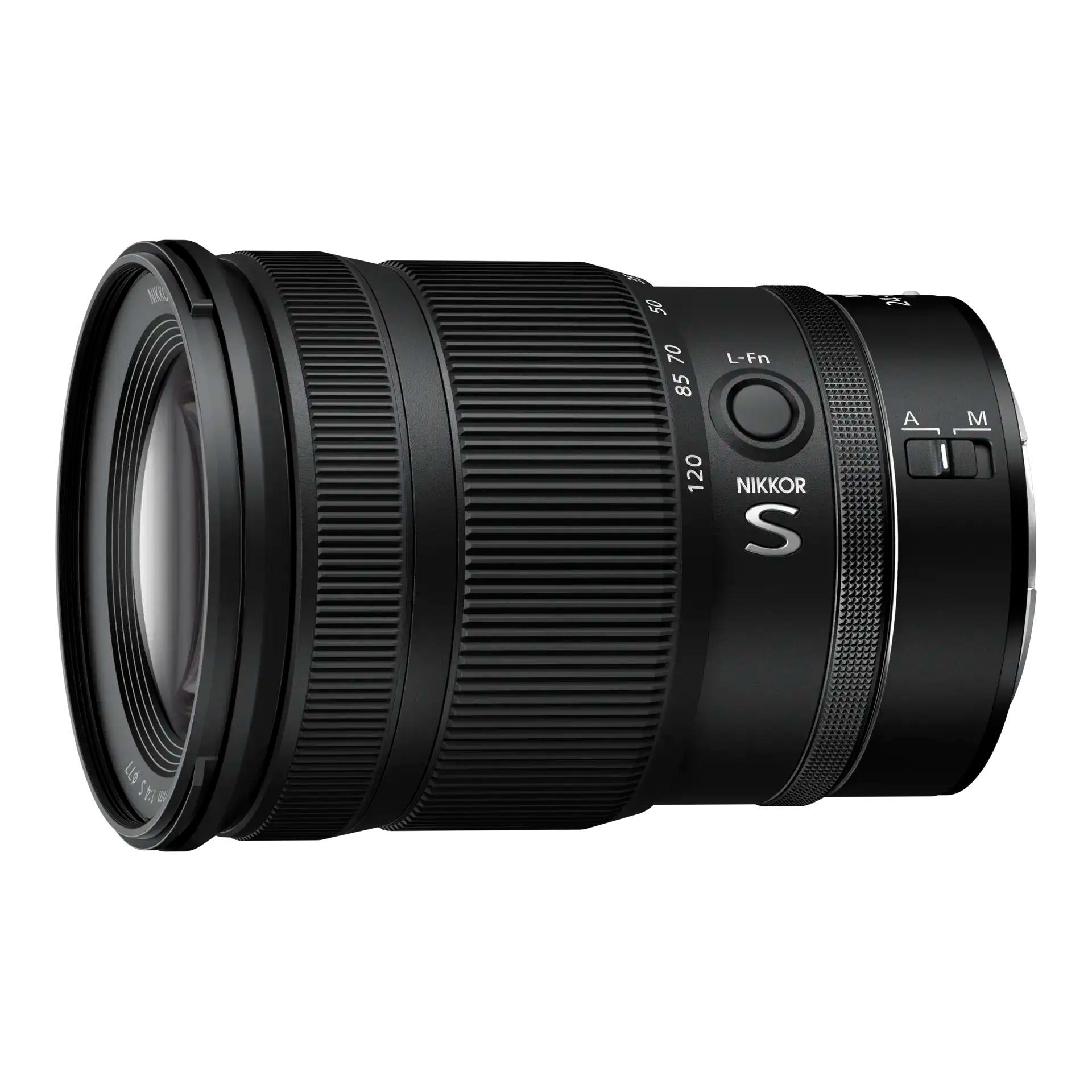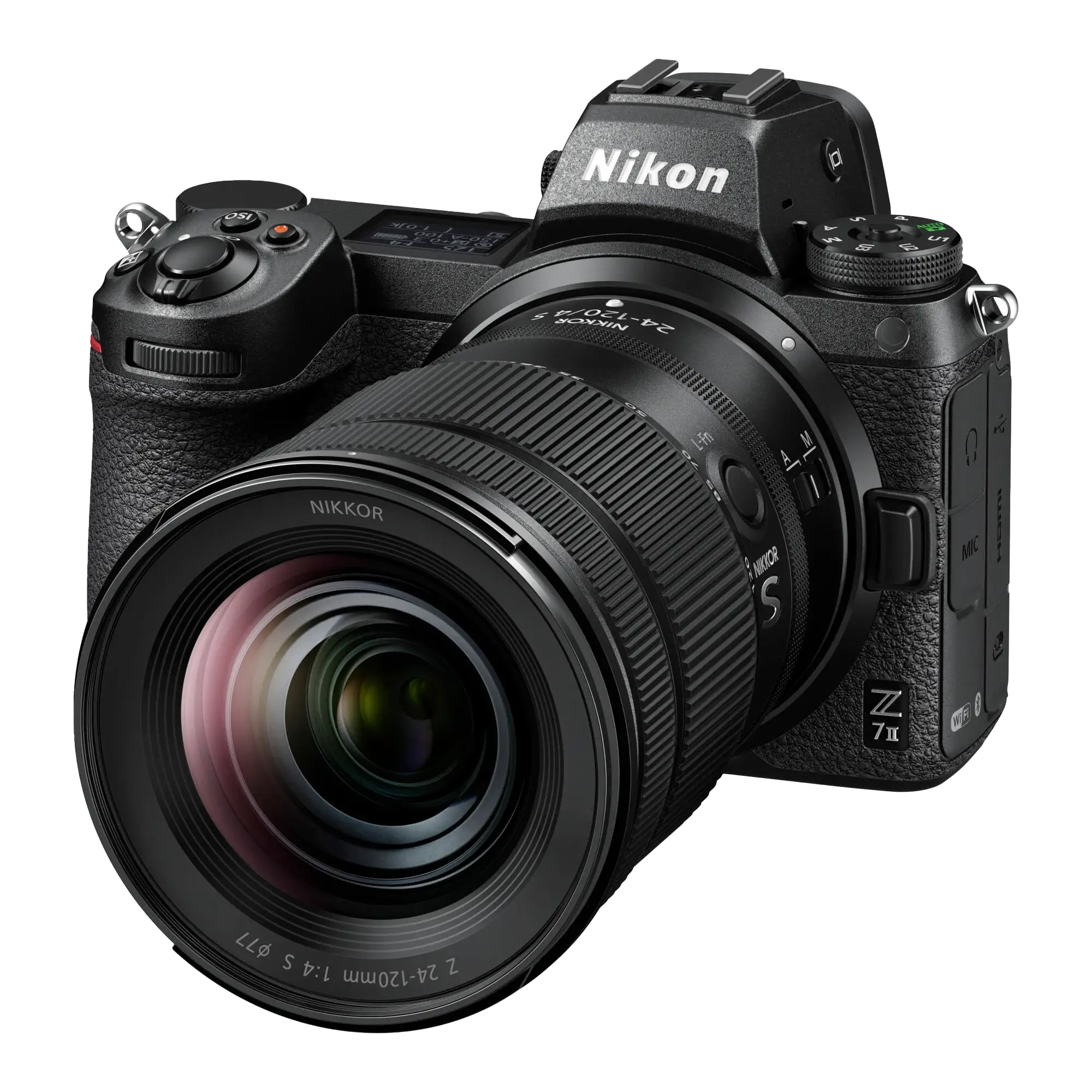Product Description
Nikon NIKKOR Z 24-120mm f/4 S Lens: Versatility Meets Performance
The NIKKOR Z 24-120mm f/4 S is an incredibly versatile zoom lens designed for Nikon's Z-mount mirrorless cameras. Covering a wide-angle to short-telephoto range, this lens is perfect for landscapes, portraits, street photography, and travel. With a constant f/4 maximum aperture, it delivers consistent performance throughout its entire zoom range, making it a go-to choice for photographers who need adaptability and high-quality results in various shooting environments. Despite its versatility, the lens maintains a compact and lightweight design, making it ideal for photographers on the move.

Key Features at a Glance:
- Focal Length: 24-120mm, covering wide-angle to short telephoto
- Maximum Aperture: Constant f/4 throughout the zoom range
- Lens Elements: 3 ED elements, 1 aspherical ED element, and 3 aspherical elements for sharpness and clarity
- Coatings: ARNEO and Nano Crystal Coats to combat ghosting and flare
- Autofocus: Dual AF drive units for fast, accurate, and quiet focusing
- Close Focus: Minimum focusing distance of 1.1' and 0.39x magnification for close-up shots
- Build Quality: Dust- and moisture-resistant with a fluorine-coated front element
- Control Ring: Programmable for aperture, focus, or exposure compensation
- L.Fn Button: Customisable for quick access to camera functions

Advanced Optical Design for Sharpness and Clarity
The optical design of the NIKKOR Z 24-120mm f/4 S is packed with innovations that deliver outstanding image quality across the zoom range. Its construction includes three Extra-Low Dispersion (ED) elements, one aspherical ED element, and three aspherical elements, all working together to minimise chromatic and spherical aberrations. This results in excellent sharpness, clarity, and contrast, even when shooting wide open at f/4. Whether you’re capturing wide landscapes or focusing on details, this lens delivers pin-sharp results across the frame.

Advanced Coating Technology for Improved Contrast
The lens benefits from Nikon’s industry-leading ARNEO and Nano Crystal Coats, which significantly reduce unwanted reflections, ghosting, and flare. These coatings are particularly useful when shooting in bright or backlit conditions, ensuring that your images maintain high contrast and rich colour saturation. Whether the light is hitting the lens from a diagonal or vertical direction, the Nano Crystal and ARNEO Coats effectively combat flare, allowing you to confidently shoot in challenging lighting without sacrificing image quality.

High-Speed Autofocus and Precision
Equipped with a multi-focus system, the NIKKOR Z 24-120mm f/4 S features two synchronized autofocus (AF) drive units that deliver fast, accurate, and quiet focusing. This system ensures seamless focusing throughout the zoom range, making the lens perfect for both still photography and video recording. The stepping motors allow for smooth transitions and silent operation, ideal for capturing discreet shots or recording videos without intrusive noise. Additionally, full-time manual focus override provides creative control for situations requiring precise focus adjustments.

Versatile Close-Focusing Capabilities
With a minimum focusing distance of 1.1' and a maximum magnification of 0.39x, this lens is surprisingly capable of handling close-up subjects, adding even more versatility to its repertoire. Whether you’re capturing small details in nature, intricate textures, or expressive portraits, the close-focusing capability expands the creative possibilities of this lens, allowing you to get closer and reveal more.

Designed for Ease of Use and Durability
The lens is packed with features that cater to the demands of professional photographers. The programmable control ring can be customised to adjust settings like aperture, focus, or exposure compensation, giving you intuitive control at your fingertips. Additionally, the assignable L.Fn button allows quick access to camera functions, making it easier to adjust your settings without taking your eye off the shot.

Built to withstand the elements, the NIKKOR Z 24-120mm f/4 S is both dust- and moisture-resistant, with a fluorine-coated front element that repels water, dirt, and fingerprints, ensuring that your lens remains clean and functional even in tough conditions. Whether you’re shooting in a rainy landscape or a dusty outdoor environment, this lens is designed to keep performing.

The NIKKOR Z 24-120mm f/4 S is the ultimate everyday lens for photographers who need reliability, versatility, and exceptional image quality. Whether you’re shooting wide landscapes or zooming in for portraits, this lens offers outstanding performance with professional features that allow you to push your creative boundaries.

Payment & Security
Your payment information is processed securely. We do not store credit card details nor have access to your credit card information.






















